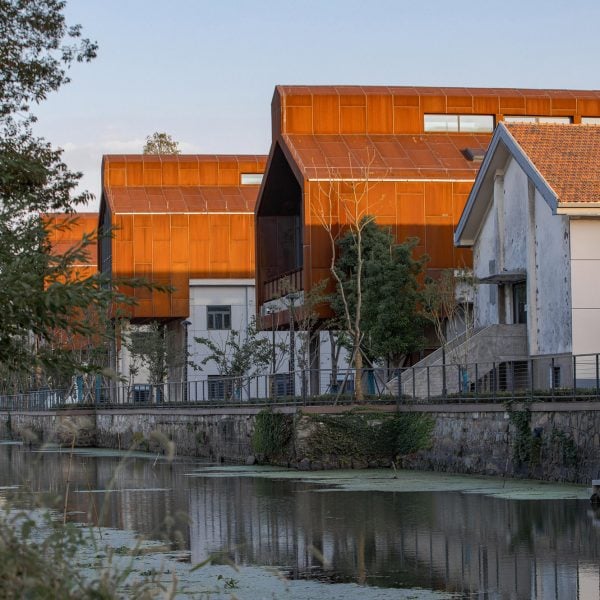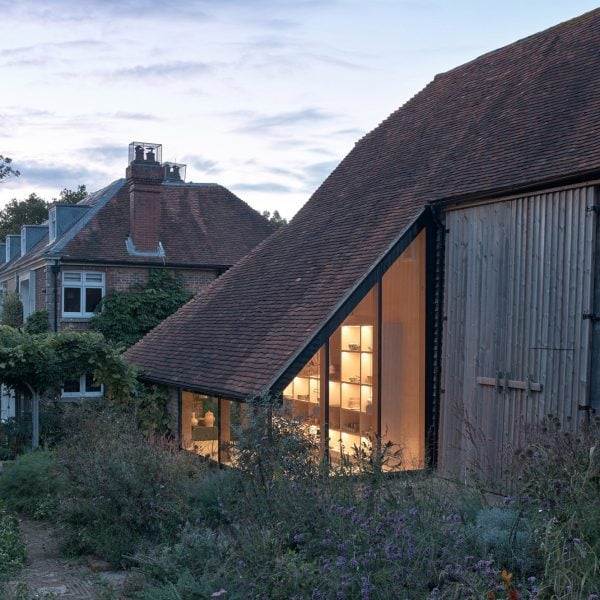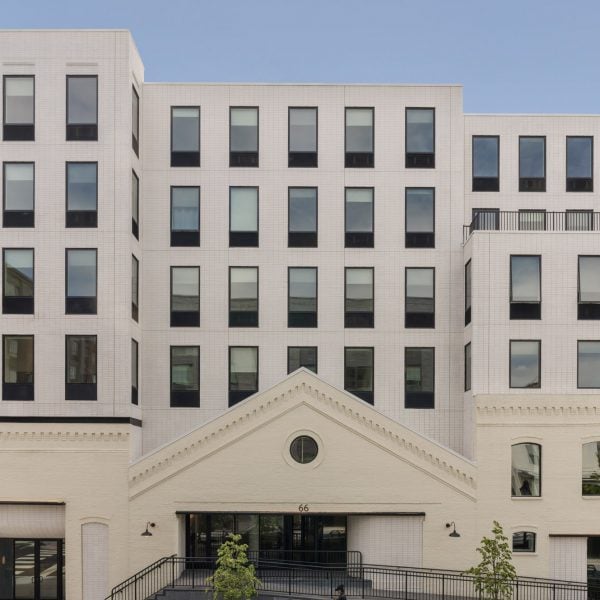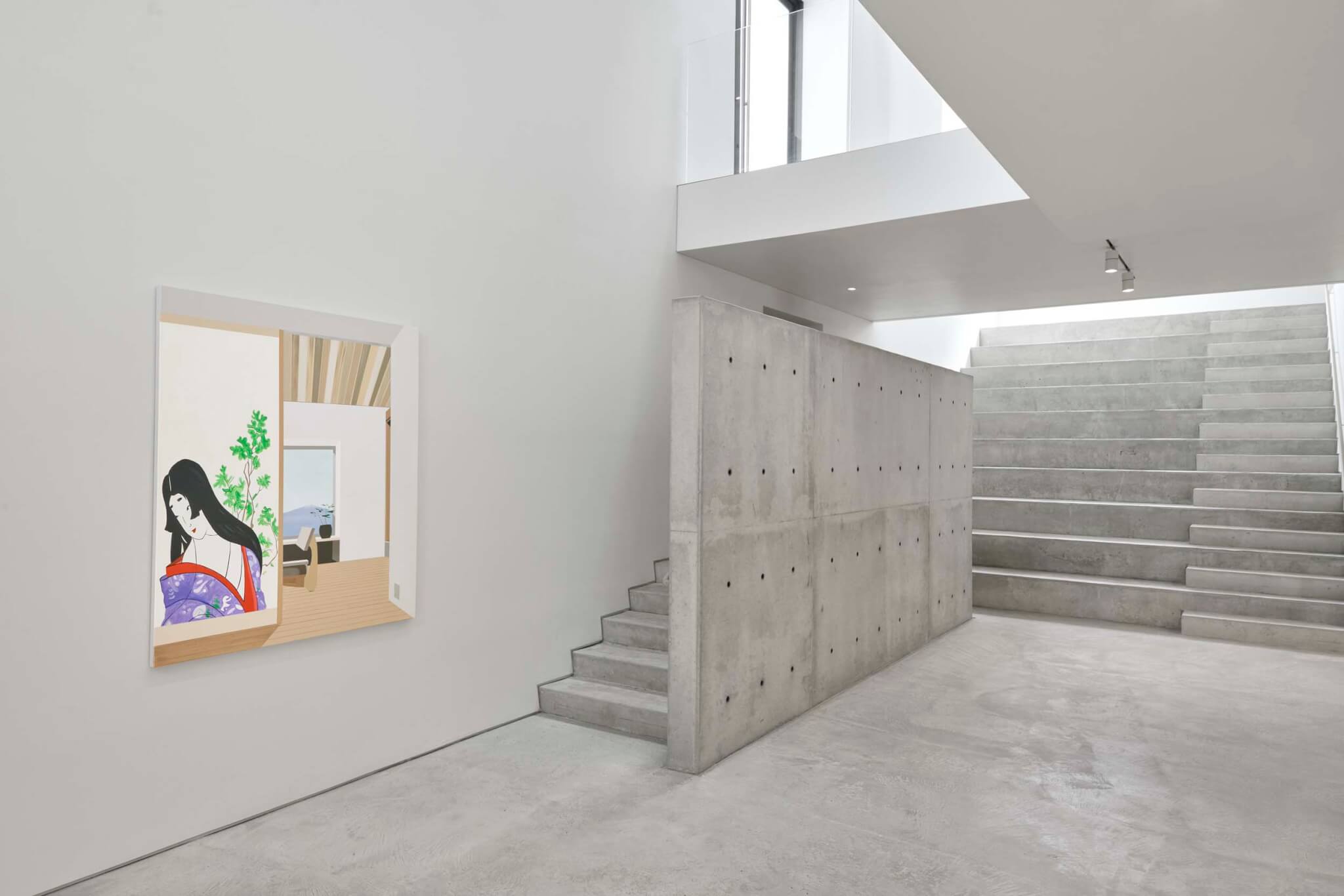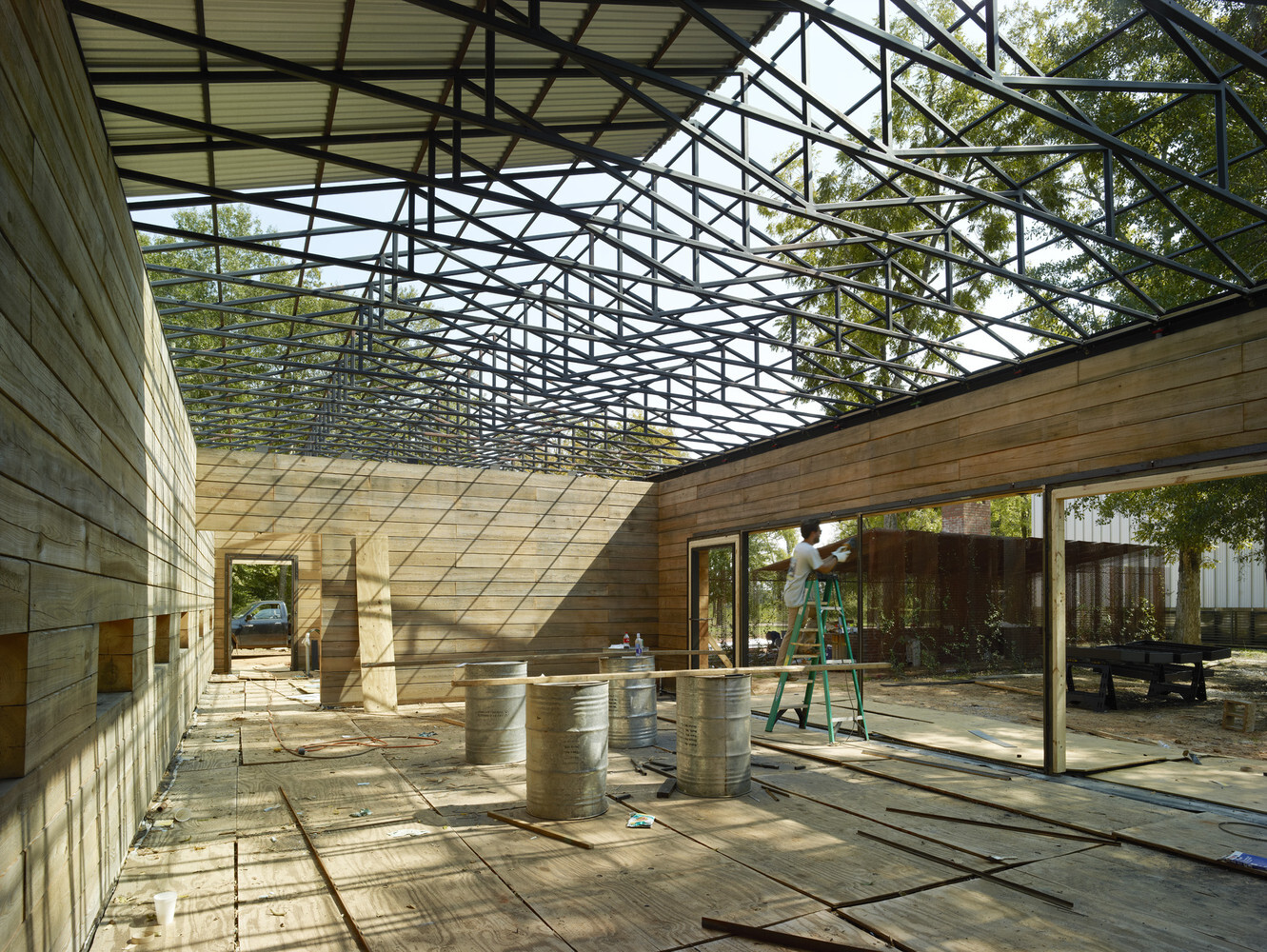Chinese studio Lichao Architecture Design Studio has transformed an abandoned brewery in Zhejiang, China, into a creative park, retaining its industrial character with additions in reclaimed brick and weathered steel. The 25,400-square-metre site in the historic water town of Wuzhen was originally developed in the 1950s as an extensive factory campus containing production facilities, offices […]
Spanish architecture practice XStudio has inserted a ceramics workshop and apartment into the worn-out shell of an abandoned bar on the island of Gran Canaria. The project, called House M, occupies an old corner building in the Arenales neighbourhood of the Canary Island‘s capital Las Palmas, which had stood abandoned for decades. Drawn to its […]
Plywood shelves lined with ceramics are slotted beneath the old oak trusses of Underwing Workshop, a pottery studio that British studio Ashton Porter Architects has created in an English barn. Located in the village of Framfield, East Sussex, the studio occupies a dilapidated lean-to storage space attached to the Grade II-listed hay barn, which dates […]
New York-based GRT Architects has completed a mixed-use complex in Jersey City, which involved restoring three brick warehouses and adding four new levels. The 66 Monitor development – also known as The Starling – includes 39 residential units, a large restaurant, a small cafe and parking within the expanded complex. GRT Architects built a white-brick […]
On the corner of Kent Avenue and South 4th Street near the Williamsburg waterfront a charming brick building once a factory has been repurposed into a nonprofit arts and office space, dubbed Williamsburg Biannual. The adaptive reuse project at 333 Kent Avenue was designed by Jorge Zapata, founder of JAZ Architects. Williamsburg Biannual is situated amid […]
Newbern Town Hall. Image © Timothy Hursley Share Share Facebook Twitter Mail Pinterest Whatsapp Or https://www.archdaily.com/1022027/designing-shared-rural-environments-defining-public-spaces-beyond-urban-metrics Rural environments are often difficult to define in administrative and professional contexts and carry notable biases and complexities. Population and density thresholds are the most common determinants for drawing administrative boundaries, yet other factors, such as infrastructure, employment, and […]
